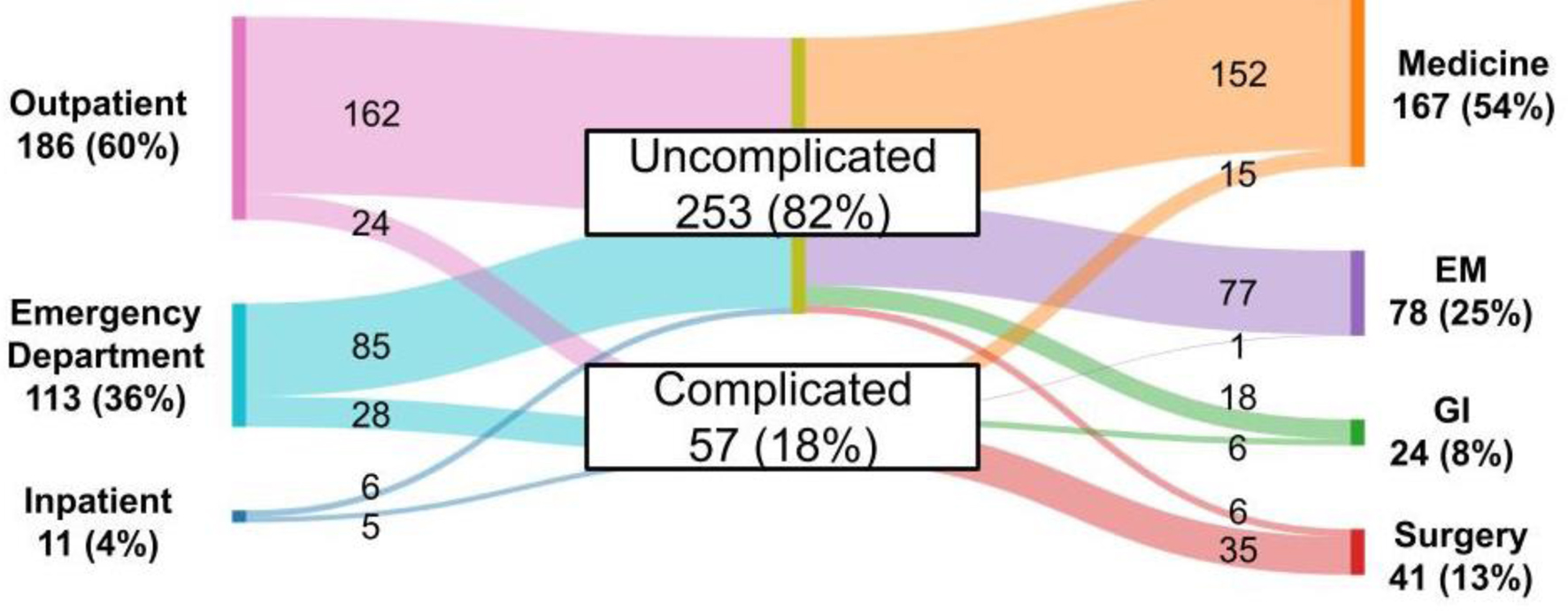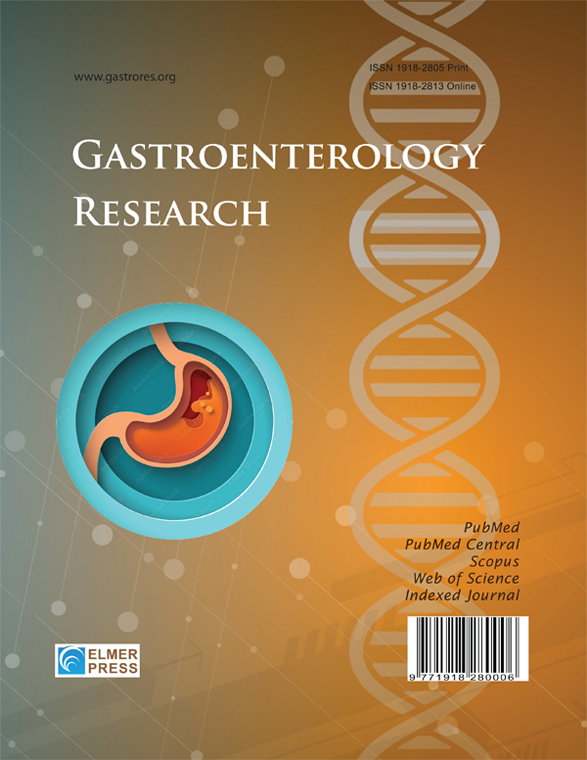Characterizing Patterns of Care for Diverticulitis Within the Contemporary Health System
DOI:
https://doi.org/10.14740/gr2055Keywords:
Diverticulitis, Colonoscopy, Antibiotics, Clinical Practice Guideline, Colorectal Surgery, GastroenterologyAbstract
Background: Diverticulitis is a common colon pathology that contributes a significant healthcare burden due to hospitalizations, colonoscopies, and operations. Although recent clinical practice guidelines (CPGs) advocate for less frequent and selective use of antibiotics, colonoscopies, admissions, and operations, rates of admissions and elective operations for diverticulitis have paradoxically increased over time. Understanding where patients seek care for diverticulitis can identify areas where CPGs are or are not being followed. This study aimed to describe care settings, treating providers, and characterize treatment patterns for diverticulitis.
Methods: This prospective cohort study included patients with diverticulitis diagnosed via computed tomography (CT) scan at a single institution between 2019 and 2020. The CT scan setting (outpatient, emergency department, or inpatient), main treating provider specialty (medicine, surgery, gastroenterology, or emergency medicine), and clinical characteristics were identified. For each patient, antibiotic prescription, screening colonoscopy within a year of diagnosis, and surgical referrals were characterized.
Results: A total of 310 patients (mean age 62, 60.3% female) were included, with 71.3% being new diagnoses of diverticulitis. Eighteen percent of diagnoses were complicated diverticulitis. Most diagnoses occurred in the outpatient setting (60%), followed by the emergency department (36.5%), then inpatient (3.5%). Complicated diverticulitis cases more frequently presented to the emergency department than outpatient (25% vs. 12.9%, P = 0.002). Antibiotics were prescribed in 91% of cases, with the highest rate in the emergency department (96.5%) compared to outpatient (87.6%) or inpatient (90.9%, P = 0.036). Colonoscopy was up to date in 45.1% of uncomplicated and 54.4% of complicated cases (P = 0.137). Surgical referrals occurred in 38.7% of patients, with higher rates for complicated diverticulitis (84.2% vs. 28.6%, P < 0.001).
Conclusion: Most episodes of diverticulitis are uncomplicated and occur in the outpatient setting. However, care remains fragmented across multiple specialties, making it challenging to measure the appropriate delivery of CPG-concordant care for diverticulitis. The variation in management of diverticulitis highlights the need for a more coordinated, system-level approach to enable high-quality care delivery.

Published
Issue
Section
License
Copyright (c) 2025 The authors

This work is licensed under a Creative Commons Attribution-NonCommercial 4.0 International License.










